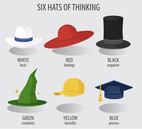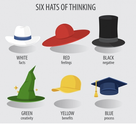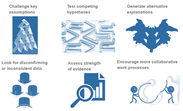...
Following the analysis spectrum, analysts progress from facts to meaning. The journey generally starts with exploring and describing the available data and understanding what is available, what is missing, and what can be done with the data. From this phase, some stories will appear that will be further explored and confirmed by systematically comparing data and looking for relationships. Making solid arguments based on firm evidence and logic is at the heart of the analysis. After compiling and evaluating the relevant evidence, analysts need to formulate conclusions, recognize unsupported assumptions and consider alternative explanations. The spectrum can be tied to the expectations of analysis in the humanitarian Program Cycle, see image below to identify the level of analysis required as a response progresses.
Biases and how to mitigate them
...
Bias | Description | Examples | |
|---|---|---|---|
Selection bias | caused by choosing non-random data for analysis. Some information is unconsciously chosen or disregarded, misleading the analyst into a wrong conclusion. |
|
|
The key to overcoming selection biases is to examine carefully the credibility and reliability of sources and data use to base the analysis. | |||
Usability of Data
| Credibility of the Data:
| Reliability of Sources
| |
Bias | Description | Examples | |
Social Bias | the result of interactions with other people. The way we are processing and analyzing information depends on our relations with the persons who provided us with the information or hypothesis. |
|
|
Mitigation techniques | The key to overcome social biases is to examine carefully the number of assumptions used to fill information gaps and to actively seek alternative hypothesis. | ||
|
| ||
Process | our tendency to process information based on cognitive factors rather than evidence. When we process information, we often display inherent thinking errors. They prevent an analyst from accurately understanding reality even when all the needed data and evidence are in his/her hands. |
|
|
Bias | Description | Examples | |
Mitigation techniques | By making the way the information processed obvious to everyone, members of a team can acknowledge the limitations and advantages of each of the roles. | ||
|
|
| |
...
Types of Analysis in the humanitarian context
...
COD-HP, PIN
Needs analysis
Joint analysis
Analytical framework
Intuitive vs analytical thinking (?)
Biases
Outputs/Resources
...
Special thanks to ACAPS, OCHA NAAS NARAS for the material used in the analysis section of the toolbox.



